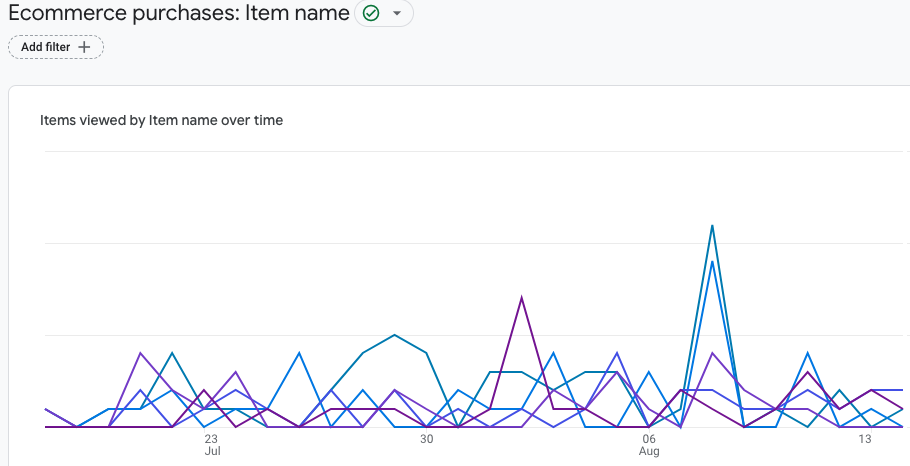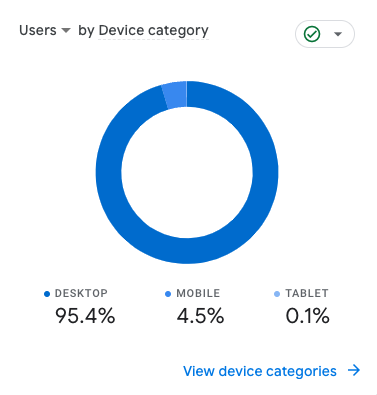Use our AI-powered chat to more quickly connect with Corkboard Concepts thought leadership and find answers to questions you may have!
Use our AI-powered chat to more quickly connect with Corkboard Concepts thought leadership and find answers to questions you may have!
A Comprehensive Guide to GA4’s Conversion Tracking and Advanced Attribution Modeling
Enabling GA4 for Comprehensive Tracking and User Analysis
In the area of dynamic digital marketing, Google Analytics 4 (GA4) stands as a great addition to a digital marketer's toolset for intricately tracking conversions and attributing user interactions. Since the changeover, there has been a lot of negative feedback on GA4 compared to the previous Google Analytics instance, Universal Analytics, which should be expected any time there is a change. This guide takes a deep dive into configuring GA4, enabling its conversion tracking capabilities, and employing robust attribution models. Navigate through the distinct nuances between GA4 and its predecessor, Universal Analytics, to fully extract the tracking required for refining your data-driven marketing tactics.Configuring GA4 for Conversion Tracking:
To get the most out of GA4, you first have to fully configure and enable conversion tracking in GA4. Google’s initial setup and migration to GA4 helped marketers and businesses to a point, but make sure that events are fully set up. Harnessing the potential of GA4 for conversion tracking mandates foundational steps:- Establishing a GA4 Property: If you haven't set up your GA4 property yet, ensure you do so by either migrating your UA data or setting it up fresh.
- Implementing the GA4 Tracking Code: Integrate the GA4 tracking code on website or app interactions that you want to track. The easiest way to do this is to use the GA4 event setup in Google Tag Manager (you'll have to have this placed on your website/app before using it but once you have, it's much easier to manage tags and event snippets).
Conversion Tracking with GA4:
- Defining Conversions and Events: GA4 takes an event-centric approach to web and app interactions. Events trigger set actions on the website, like button clicks, page depth, video views, purchases, form submissions, and more. Some events are set up by default but others that need to be implemented.
- Configuring Conversion Events: As mentioned earlier, it's ideal to set these events up through Google Tag Manager (GTM). These specific "event" actions are then tracked as Conversions either through Goal setup on the GA4 property, or through ecommerce metrics. As a note, for pageview events and e-commerce metrics, you don't always need to implement them on Google Tag Manager.
Enhanced User Journey Analysis with GA4: A Deep Dive
In digital marketing analytics, deciphering user behavior has become imperative. Google Analytics 4's comprehensive view of the user journey provides a tool for a fuller view of purchase behavior, taking into consideration the different website sessions, ad interactions, and more.Understanding Enhanced User Journey Analysis:
GA4's enhanced user journey analysis pushes passed Universal Analytics by providing a full view of user interactions across multiple platforms, spanning websites and apps. Unlike its predecessor, GA4 does not confine its insights to individual channels; it offers a holistic perspective that mirrors the interconnected nature of today's digital landscape. This capability empowers marketers with a comprehensive understanding of user behavior, regardless of their entry point, and reveals how interactions across platforms culminate in conversions.Benefits of Enhanced User Journey Analysis:
Holistic Behavior Understanding:
Instead of piecing together fragmented insights from various analytics tools, marketers can now visualize data across the complete user journey. This holistic understanding empowers them to optimize user experiences across different stages of the journey, from initial engagement to conversion.Precise Attribution:
Attribution, the process of understanding credit to multiple touchpoints contributing to conversions (rather than just the final action), garners a substantial uplift within GA4. Enhanced user journey analysis aids in precisely attributing conversions and interactions. By recognizing touchpoints that contribute significantly to conversions, marketers can allocate resources more effectively, focusing on strategies that generate maximum impact. Comparing GA4 and Universal Analytics Attribution: GA4 does not have the same constraints posed by Universal Analytics, endowing marketers with comprehensive attribution models. This holistic view of user journeys, spanning devices and channels, allows for insights that were previously not available in UA’s beta-version of Enhanced Attribution. Customizing Attribution Models: The capacity to customize attribution models within GA4 accords versatility by your business intricacies. This customization empowers you to allocate distinct weights to touchpoints, reflective of their influence across the conversion journey.Enabling Enhanced User Journey Analysis:
Utilize Unified Tracking:
Marketers can enable enhanced user journey analysis by deploying unified tracking across their digital assets. This entails implementing GA4 tracking codes consistently on websites and apps. Unified tracking ensures that user interactions are seamlessly captured across platforms, forming the foundation for comprehensive analysis.Implement Custom Events:
GA4's event-based tracking system allows marketers to create custom events that mirror user interactions. By defining events that encapsulate critical touchpoints in the user journey, marketers can gain insights into specific actions that lead to conversions.Don’t Want To Miss Anything? Sign Up For Our Newsletter!
Don’t Want To Miss Anything? Sign Up For Our Newsletter!
Leverage Event Parameters:
Event parameters enable marketers to capture nuanced data about user interactions. For instance, parameters can be used to gather information about specific products viewed, buttons clicked, or pages visited. This level of granularity enhances the precision of user journey analysis.Examples of Enhanced User Journey Analysis in Action:
 E-commerce Conversion Optimization:
E-commerce Conversion Optimization:
Imagine a user begins their journey by browsing products on a company's website, adding items to the cart, and then completing the purchase on the mobile app. Enhanced user journey analysis in GA4 would seamlessly connect these touchpoints, offering insights into the user's behavior at every step. Marketers can determine the most influential touchpoints, optimize the user experience, and potentially reduce friction points that hinder conversions.
App Engagement Enhancement:
For a mobile app-based business, a user may see an ad on social media, download the app, and then complete a transaction. GA4's holistic analysis reveals how each of these interactions contributes to the user's decision to engage with the app and make a purchase. Armed with this information, marketers can refine their advertising strategies, fine-tune user onboarding experiences, and enhance overall app engagement.Wrapping Up the Enhanced User Journey with GA4:
Enhanced user journey analysis offered by GA4 heralds a new era in marketing analytics. By seamlessly connecting user interactions across platforms, marketers gain a comprehensive understanding of behavior and attribution. The benefits span from seamless cross-platform insights to precise attribution and holistic understanding of user behavior. To harness these advantages, marketers must implement unified tracking, define custom events, and leverage event parameters. As businesses navigate the complexities of the digital landscape, GA4's enhanced user journey analysis emerges as a potent tool for optimizing strategies and driving meaningful engagement.Benefits of GA4 Conversion Tracking:
Embracing GA4's conversion tracking confers a plethora of benefits:- Cross-Platform Insights: Seamless tracking of user interactions across platforms, culminating in precise cross-platform analysis, allowing for better connections between digital properties, advertising outlets, and more.
- Future-Ready Analytics: Just like Universal Analytics set the standard for nearly 20 years of website analytics, GA4's adaptive architecture provides it with the ability to navigate analytics and tracking for the foreseeable future.











